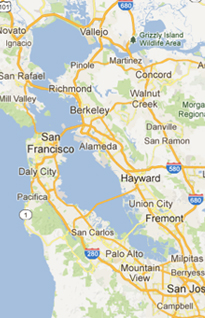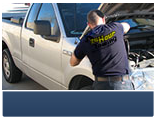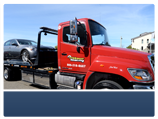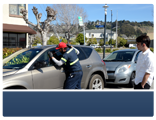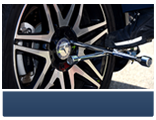Towing & Roadside Assistance Tips
Q: What is the safest way to tow a car?
A: The first step in towing any vehicle is to find out the precise weight of the load that needs to be towed. Since each vehicle is different, it’s important to check your manufacturer’s guide for your vehicle weight. Once you determine the weight of the load, you will then have a better understanding on how to set up the tow. Here is a step by step breakdown process on how to safely tow your vehicle from one point to another:
- Before you prepare your vehicle for the towing journey, it’s essential that the vehicle is put in the neutral position. Once the vehicle is set to neutral, you may then fasten a chain from the trailer hitch of the towing vehicle to your car.
- Under no circumstances should you ever have a passenger present in the vehicle that is being towed. It is not only dangerous; it is also against the law.
- Use a bright and visible sign that warns other vehicles to keep a safe distance from behind. This process is extremely important in order to prevent any potential accidents from occurring during the towing trip. Remember, you’ll be driving at a slower speed than normal.
- Once the vehicle is carefully attached to the towing trailer, you can they begin a short trip test drive to double check for any security flaws. Make sure to check your mirrors before driving off.
- While driving the towing trailer, you should never exceed a speed of 45 mph. Always allow yourself plenty of braking space between the next vehicle. If you notice any problems with the towing, you can always stop at a service station.
Q: How do I know which towing vehicle is right for my vehicle?
A: There are several towing vehicles available at any given time. Flatbed trucks, however, are the most ideal and safest way to transport a vehicle to its intended destination. Flatbed trucks carry the entire weight distribution of your vehicle with a trailer ramp. None of the wheels ever touch the ground, which is ideal for protecting your vehicle against any dangerous bumps that could cause serious damage otherwise.
Q: How do I drive a tow truck in rainy weather?
A: You must reduce your speed in half when driving during hazardous weather conditions such as heavy rains or snow. The roads become very dangerous and slippery. Accidents can be prevented with a bit of caution. Avoid sudden stops with a truck and allow for ample braking space, at least 10 feet or more during hazardous driving conditions. Slow down during sharp curves and turns, especially on mountain slopes. Make sure you stay focused on the road at all times.
Emergency Towing – Can Help
Whether you’re considering a long distance towing or a local towing; we can provide all the towing and roadside assistance you need. Emergency Towing is well known throughout California as being the most trusted company in the state. We have a fleet of trucks that go as far as San Jose and across the Bay Area. We offer the best prices and stand out in terms of quality and reliability. All you have to do is pick up the phone, and let our friendly customer care team assist with everything else. You may also be eligible to receive a discount per mile traveled, and we can provide you with direct billing. Direct billing takes away some of the unneeded stress of personally contacting your insurance company. Trust only the best with your vehicle, trust Emergency Towing! Call us today for more details.





